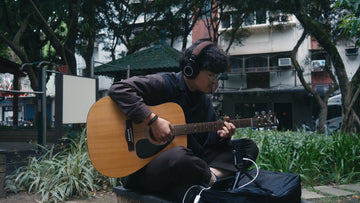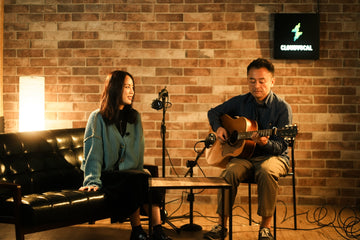
The quest for tone is the essence of music. It is the search for your signature sound, for your own voice. Your tone defines you and sets you apart as a unique musical individual, just like the timbre of your voice. Your tone is where you express yourself as a person. Your tone is where you become you in music. Your tone is you.
Tone is very personal and it is more then sound alone.
Tone exists in the total symbiosis between sound and feel. For guitarists it happens the moment you excite the string in a way only you can. The feel you put into the attack of a string through the interplay of pressure, speed, angle and material will cause the guitar to respond in a unique way to create your sound.
If tone is such a personal thing and results from your direct interaction with the instrument, amplifying it without changing it presents the real challenge for amplifying acoustic instruments. The amplification of acoustic guitars is notoriously difficult because the more natural the amplified guitar sounds, the more prone to feedback it becomes. So you are always looking for a compromise between natural sound and volume without feedback. But the real goal is not to make the amplified guitar sound ‘the same, only louder’, it is making your tone sound ánd feel the same only louder. The goal of acoustic amplification should be: you, only louder.
It was when I got a Martin D-18 that the search became even harder.
It did not have a pickup installed and sounded so good that I did not dare to put one in, fearing the guitars natural sound would be altered. Then I discovered the iSolo Choice by Cloudvocal: a wireless internal mic that is mounted in the soundhole with a choice of two types of rubber mounts: an open one and a feedback buster type which covers the soundhole. My scepticism about an internal mic was initially confirmed by the boxy and almost constantly feedbacking sound it produced at first. But once I got used to placing the mic it sounded very good. The right mic placement, together with the right amount of gain is crucial to a good sound. As there are 2 mics on the iSolo, one of which is fixed and one of which is on a flexible gooseneck, the possible positions are almost endless. Save yourself some time experimenting with these mic placement tips. I will only discuss the use of the feedback buster type mic mount because although it is the most difficult to get a good sound from, it gives you the least feedback.
There are four parameters you can adjust to find the mic’s sweet spot for your guitar.
- The position of the gooseneck mic relative to the soundhole and the bridge.
- The depth of the gooseneck mic inside the body of the guitar.
- The direction in which the mic itself is pointing.
- The orientation of the mount in the soundhole.
Basically there are two main postions that work best for me: the mic close to and pointing at the soundhole from a rather shallow depth (this is the ‘standard’ position if you like, when you just put the mic in without changing anything).


The second is the mic underneath and pointing up at the bridge, from a deeper position.


Both positions, together with the position of the fixed mic, can be finetuned by rotating the mic mount clockwise or counter clockwise inside the soundhole.



If these positons do not work for you, do not hesitate to rotate the mount 180 degrees in the soundhole, so that the gooseneck mic is in the upper bout of the guitar and start from there (although you obviously cannot position the mic underneath the bridge this way).
Another challenge is to get your mic at he same position everytime you put it in.
To do that I always follow the same steps when inserting the mic in the guitar:
- Adjust the basic postion to standard or bridge before inserting the mic.
- Insert the mic with the mount in the soundhole making sure you do not change the basic position.
- Then push the gooseneck down a little and if needed rotate the mount inside the soundhole.
Finally a word about gain.
I found it tempting to set the mic gain on the receiver at 100% because that gave me the most direct sound, which I was used to from using piezo pickups. But this also amplifies unwanted frequencies that naturally occur inside the guitar body, but which are barely audible when playing the guitar unamplified. Therefore I keep the mic gain at around noon for a more even and open sound.
I hope you can find your sweetspot fast and easy using these suggestions. Now start experimenting and enjoy your tone, only louder!





